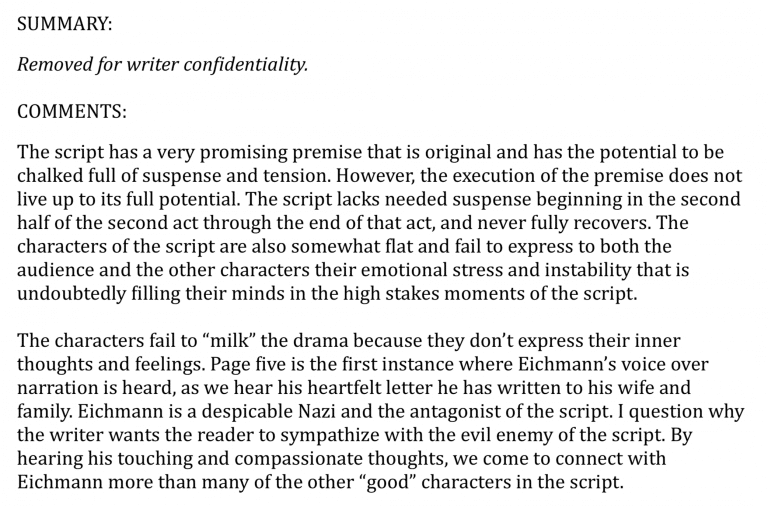Creating a story that resonates with audiences requires more than just a captivating plot. The dialogue and character arcs within your screenplay are what make your characters feel real and memorable. Strong dialogue brings your characters to life, while well-developed arcs give them depth, growth, and emotional resonance. Writers who master both aspects elevate their scripts from good to exceptional.
Understanding Dialogue
Dialogue is one of the most important tools for storytelling. It reveals a character’s personality, motivations, and emotions while advancing the plot. However, many writers struggle with making dialogue feel natural and purposeful. This is where professional feedback, like script coverage services, can make a huge difference. Such services analyze dialogue for clarity, tone, and consistency, helping writers fine-tune their words so they sound authentic and impactful.
Common Dialogue Pitfalls
- Overly Expositional Lines: Characters explaining things the audience already knows can feel forced.
- Inconsistent Speech Patterns: Characters must have distinct voices; mixing tones or vocabularies can confuse readers.
Tips for Effective Dialogue
- Read Aloud: Hearing your dialogue helps catch awkward phrasing or unnatural speech.
- Keep Character Voices Distinct: Ensure each character’s speech reflects their personality, background, and goals.
- Use Subtext: Let characters imply thoughts and emotions instead of stating everything explicitly.
Crafting Strong Character Arcs
A compelling character arc shows growth or change over the course of the story. It gives the audience a reason to care about the character’s journey. Characters who face challenges, make choices, and evolve naturally create a satisfying narrative experience.
Types of Character Arcs
- Positive Arc: Character overcomes internal flaws and grows.
- Negative Arc: Character’s decisions lead to decline or tragedy.
- Flat Arc: Character remains mostly unchanged but influences others’ growth.
Techniques to Strengthen Character Arcs
- Backstory Integration: Past experiences should inform present choices and conflicts.
- Balancing Goals and Obstacles: Ensure the character’s objectives clash meaningfully with story challenges.
- Foreshadowing and Payoff: Early hints about the character’s evolution create satisfying payoffs later.
- Constructive Feedback: Utilizing services like script coverage services again in the middle stages of revision can reveal subtle inconsistencies or missed opportunities in character development, ensuring your arc feels cohesive and engaging.
Integrating Dialogue and Character Development
Dialogue is not just about what is said it reflects who your character is and how they evolve. Use conversations to subtly reveal growth, emotional shifts, or internal conflicts. For instance, a character who begins by speaking harshly but gradually softens through interactions demonstrates a natural arc through dialogue. Well-integrated dialogue ensures that character development is evident without feeling forced.
Using Feedback to Refine Your Script
No writer is immune to blind spots. Professional notes or script analysis can highlight weak dialogue, uneven pacing, or flat character arcs. The key is to approach feedback constructively: identify patterns, revise thoughtfully, and retain your unique voice. By iterating your draft with input from external sources, your script can achieve clarity, emotional impact, and a polished finish.
Strengthening Conflict Through Dialogue
Conflict is the engine of any great story, and dialogue is one of the most effective ways to showcase it. Characters reveal their desires, fears, and flaws when interacting with others, which naturally heightens tension. By carefully crafting conversations that challenge characters and expose internal or external conflicts, writers can make their story more engaging. Paying attention to how dialogue shifts during moments of conflict also reinforces character growth, making arcs feel earned and believable.
Subtle Character Growth in Minor Scenes
Not every moment needs to be a dramatic turning point. Minor scenes offer opportunities to show incremental change through dialogue and small actions. A passing remark, a hesitation, or a shift in tone can hint at a character’s evolving perspective. These subtle cues make arcs feel organic rather than forced. Incorporating feedback from professionals, such as through script coverage services, can help identify these opportunities and ensure every line contributes to character development.
Balancing Dialogue With Visual Storytelling
While dialogue is important, it should complement not overshadow visual storytelling. Actions, expressions, and settings can communicate as much about a character as words do. Writers should strive for balance, ensuring that dialogue enhances the narrative without becoming exposition-heavy. Combining strong dialogue with visual cues creates a richer, more immersive experience, allowing the audience to connect with characters on multiple levels.
Conclusion
Mastering dialogue and character arcs is essential for any successful screenplay. Dialogue breathes life into your characters, while thoughtful arcs provide a journey audiences can invest in. By refining these elements through practice and professional feedback, writers can create scripts that are both compelling and memorable. With persistence, reflection, and strategic revisions, your storytelling will reach its fullest potential.

